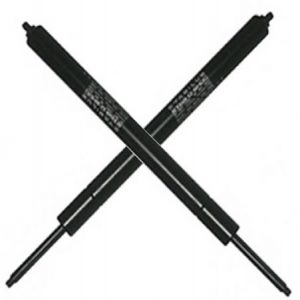
A spring is a device that’s used to store energy. When exposed to a load, energy will transfer from the load into the spring. Not all springs use a mechanical method of operation, though. Some of them use gas. Known as gas springs, they are characterized by their use of compressed gas. They feature a gas-filled cylinder that moves a rod up and down in response to a load. To learn more about gas springs and how they work, keep reading.
What Is a Gas Spring?
A gas spring is a type of spring that uses compressed gas to store energy. They typically consist of a cylinder at the bottom that’s filled with nitrogen gas. Above this cylinder is a rod-shaped piston that’s surrounding by a lubricating oil. When a gas spring is exposed to a load, the piston will sink into the cylinder where it changes the volume of the gas, thereby storing the load’s energy.
How Gas Springs Work
While they may sound complex, gas springs have a simpler method of operation. All gas springs have a piston and a gas-filled cylinder, among a few other smaller and less-significant components. In its default state — meaning there’s no load present — the piston remains out of the cylinder. The compressive force of a load, however, will push the piston into the cylinder.
The cylinder in a gas spring is sealed. Therefore, there’s nowhere for the gas to go. As the piston pushes into the cylinder, the gas will compress while subsequently pushing back against the piston. As the volume of gas inside the cylinder decreases, its pressure increases. This pressure will push back against the piston.
How Gas Springs Differ From Mechanical Springs
Mechanical springs store energy as well, but they work in a different way than gas springs. Mechanical springs feature a coiled design that allows them to store energy mechanically. A tension spring, for example, is a type of mechanical spring that stretches when exposed to a load. A compression spring, on the other hand, is a type of mechanical spring that becomes shorter when exposed to a load.
Gas springs don’t stretch when exposed to a load, but they do typically become shorter. The piston will sink into the gas spring’s cylinder, resulting in a shorter height. As long as the piston is inside the cylinder, the gas will be compressed and the spring will hold the load’s energy.
